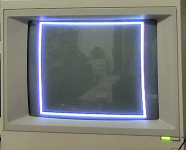daver2
10k Member
Strange...
You could try and run snake.com under DEBUG.
DEBUG snake.com
I would then have to look in the manual for ASMB for the commands for DEBUG. Most of the commands are the same as RDOS - but with the addition of Trace so you can step through the program and examine registers.
Dave
You could try and run snake.com under DEBUG.
DEBUG snake.com
I would then have to look in the manual for ASMB for the commands for DEBUG. Most of the commands are the same as RDOS - but with the addition of Trace so you can step through the program and examine registers.
Dave

